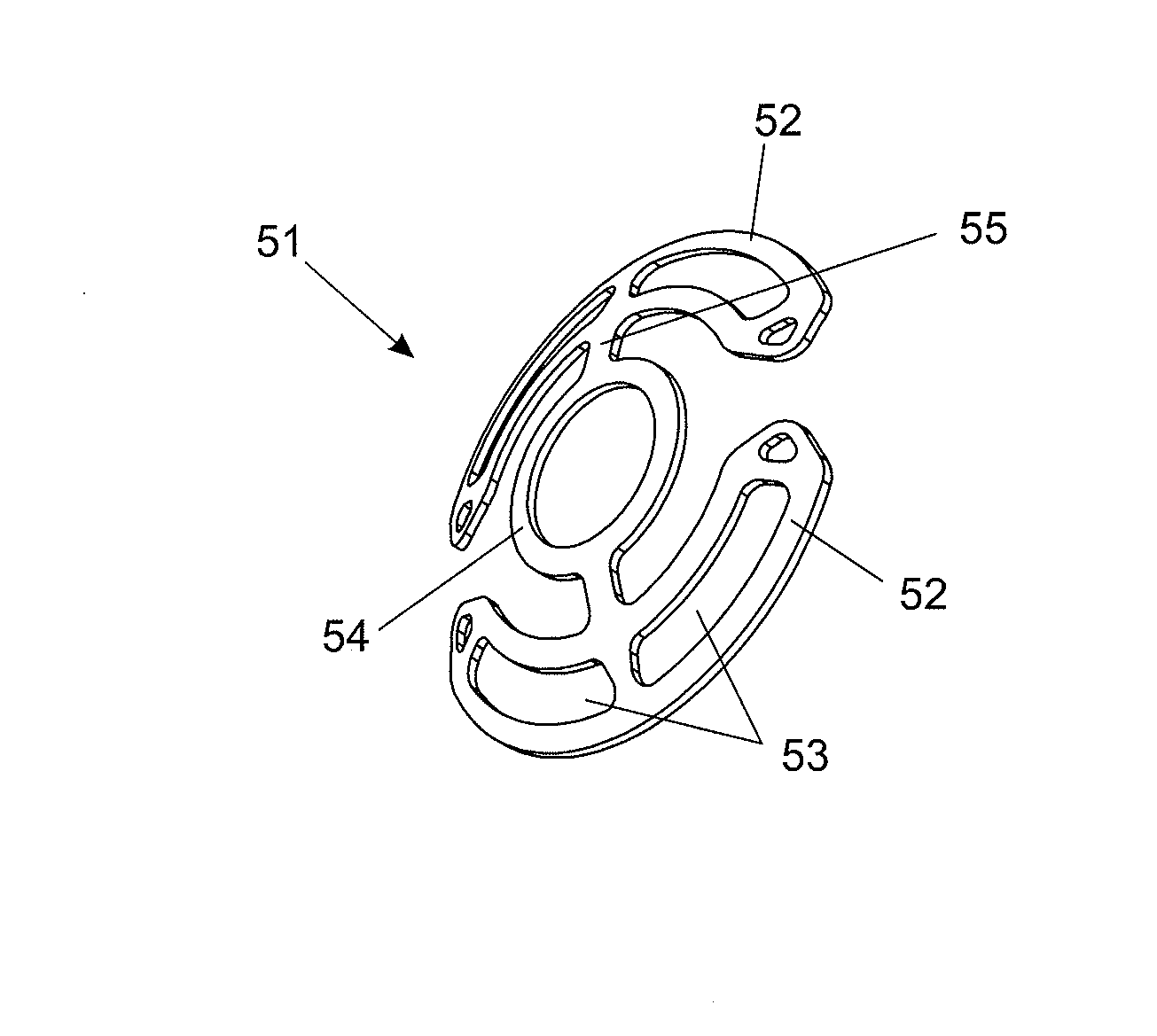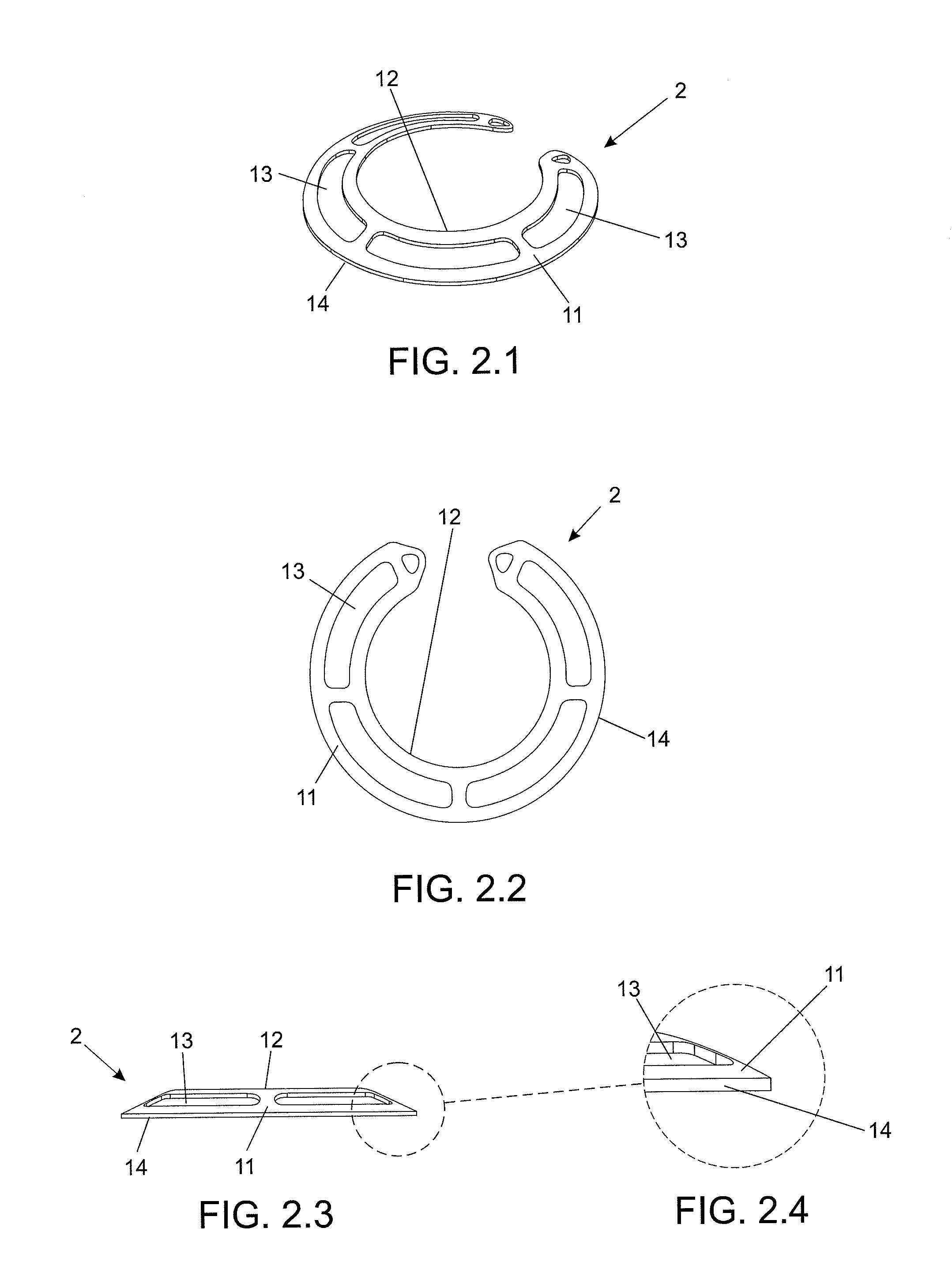Implantable device for molding the curvature of the cornea
a technology of implantable devices and curvatures, which is applied in the field of ophthalmic implants, can solve the problems of low predictability, inability to precisely estimate the final curvature of the cornea, and loss of vision quality, and achieve the effect of promoting corneal remodeling and reducing negative visual effects
- Summary
- Abstract
- Description
- Claims
- Application Information
AI Technical Summary
Benefits of technology
Problems solved by technology
Method used
Image
Examples
first embodiment
[0037]In FIGS. 1.1 to 1.5, it is illustrated said intrastromal device, which is basically defined by a circular segment 1 having a smoothly convex surface 11 having central gaps 13. It should be observed that the length of the arcs may vary, wherein the manufacture and commercialization of different models having arcs of different lengths can be carried out.
[0038]In those figures, it is observed an elevation / angle in its inner edge 12, which is due to its curvature—a differential that is responsible for reshaping the cornea into a predetermined and desired form. FIGS. 1.2 and 1.5 show the device 1 in top view and a detail of the side view profile clearly depicting the elevated position of the inner edge 12 with a curved profile between the outer edge 14 and the inner edge 12. From the top view shown in FIG. 1.2, it can be seen the presence of central gaps 13 along its structure. Said gaps 13 are crucial to ensure the biocompatibility of the device as they allow the cornea to continu...
second embodiment
[0039]FIGS. 2.1 to 2.4 illustrate a second embodiment showing an implant having greater arc length, wherein an indication of the length suitable for each patient is made by the physician. This configuration having an obtuse arc 2 is also defined by a circular segment with a smoothly convex surface 11 having central gaps 13 for transference / passage of biological material.
[0040]Said implant may also be in the form of a spherical or aspheric cap, as shown in FIGS. 3 and 4. The aspheric shape is intended to correct a spherical aberration of the patient's eye, aiming at increasing visual acuity thereof. This embodiment is completely novel compared to the devices already known from the state of the art.
[0041]In the embodiment illustrated in FIGS. 3.1 to 3.4, there is a circular body 3 with a convex surface 31 provided with a central opening 32 and cavities 33 disposed along its surface 31.
[0042]Further, in the embodiment in the form of a perimetral cap illustrated in FIGS. 4.1 to 4.4, the...
PUM
 Login to View More
Login to View More Abstract
Description
Claims
Application Information
 Login to View More
Login to View More - R&D
- Intellectual Property
- Life Sciences
- Materials
- Tech Scout
- Unparalleled Data Quality
- Higher Quality Content
- 60% Fewer Hallucinations
Browse by: Latest US Patents, China's latest patents, Technical Efficacy Thesaurus, Application Domain, Technology Topic, Popular Technical Reports.
© 2025 PatSnap. All rights reserved.Legal|Privacy policy|Modern Slavery Act Transparency Statement|Sitemap|About US| Contact US: help@patsnap.com



